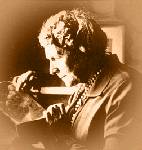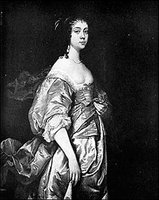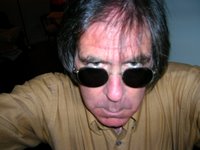
Do you ever get bored? I do. A lot! Boredom can be oppressive at times, if you let it. However, there is a bright side to boredom, though at times it can be extremely difficult to find that aspect of it. There is a small, unassuming crater on the Moon that is named the Cannon Crater. The crater was named after
Annie Jump Cannon who was born on the
11th in
1863 in Dover, Delaware. While attending school at Wellesley College in Massachusetts she caught scarlet fever during one particularly harsh winter. Because of this illness, Cannon was rendered almost completely deaf. Upon graduating in 1884, with a degree in physics, she returned home to Delaware. She found herself adrift socially and personally because she was virtually without hearing and was older and better educated than other women her age in Dover. She understandably became bored and extremely restless. In 1893, Cannon wrote to one of her professors at Wellesley, to find out if there were any openings at the school. As a result of this letter,
written out of sheer boredom,
Sarah Frances Whiting, a professor of physics and astronomy hired Cannon to be her assistant. The position allowed her to pursue graduate courses and Whiting nudged her into studying spectroscopy and photography. As it developed these were areas for which Annie was particularly well suited. During her career,
Annie would discover 300 variable stars, 5 novae and a binary star. In
1925,
Oxford University in England awarded her an
honorary doctorate, making her
the first woman ever to be accorded such an honor.
 On the 17th in 1903, Orville and Wilbur Wright were finally successful in their quest to build a heavier-than-air flying machine. The fourth flight of the day, with Wilbur at the controls, lasted 59 seconds. On April 19, 1944, Orville went on his last airplane flight, as a guest of Howard Hughes, at the controls of a Lockheed Constellation. Orville was quick to point out that the wingspan of the Constellation was longer than the first flight.
On the 17th in 1903, Orville and Wilbur Wright were finally successful in their quest to build a heavier-than-air flying machine. The fourth flight of the day, with Wilbur at the controls, lasted 59 seconds. On April 19, 1944, Orville went on his last airplane flight, as a guest of Howard Hughes, at the controls of a Lockheed Constellation. Orville was quick to point out that the wingspan of the Constellation was longer than the first flight.








